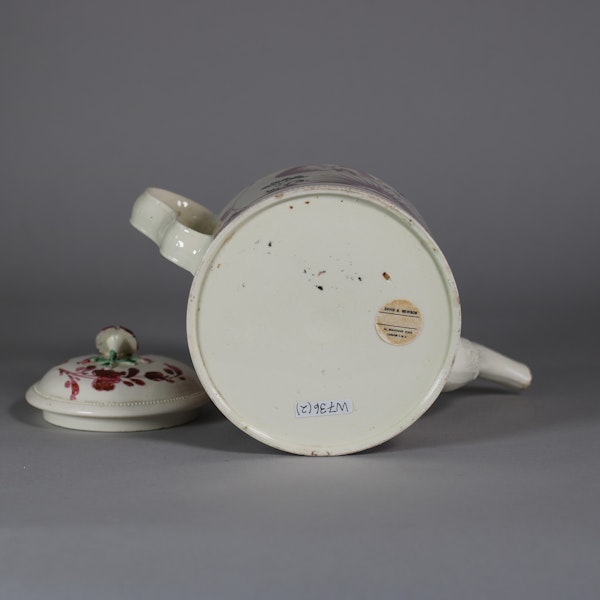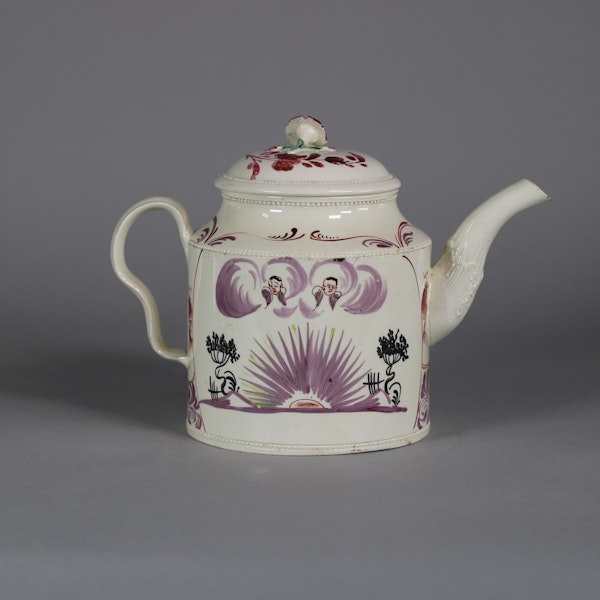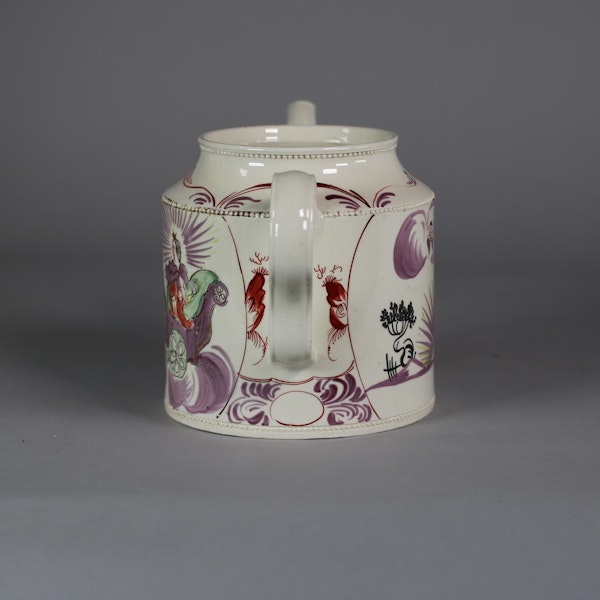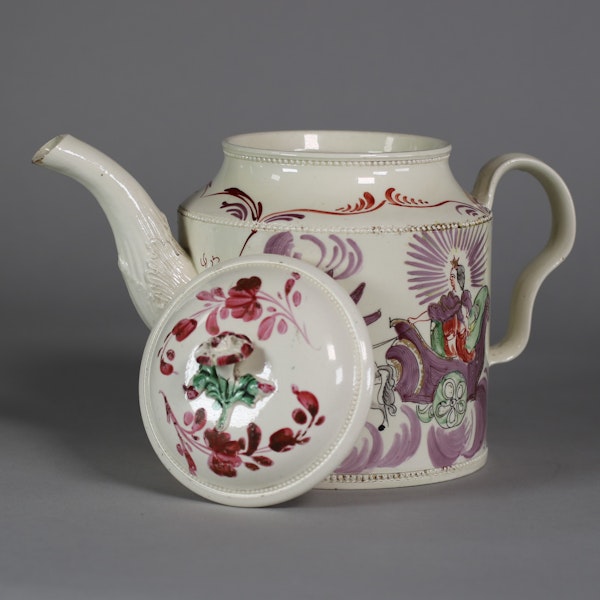Leeds cylindrical creamware teapot, c.1775
Leeds cylindrical creamware teapot, c.1775
POA
Description
Leeds cylindrical creamware teapot, c.1775, with ear-shaped applied handle, curved spout with moulded foliate design and four narrow bands of moulded pearls, decorated in mauve, pink, iron-red, black and light green overglaze enamels to the body with the Roman goddess Aurora driving her chariot amongst the clouds, the reverse with the sun rising in a landscape with cherubim in clouds above, the collar with further foliate scrolls, the lid decorated with floral sprays and surmounted by a moulded rose-spray finial.
Height: 13.5cm (5 3/8in.); width: 19cm. (7 1/2in.)
Condition: Tiny chip to end of spout
Notes:
Creamware is a type of earthenware pottery developed in Staffordshire in the mid-18th century by potters who were looking to create a ceramic more refined and lightweight than saltglazed wares yet more durable and inexpensive than soft-paste porcelain. The refined body and characteristic pale cream colour is the result of combining white clay with calcined flint before firing at around 800 degrees and applying a lead-based glaze. By the 1760s Leeds had emerged as a leading centre for the production of creamware and as the main competitor to Thomas Wedgwood in Staffordshire. Depictions of Aurora driving her chariot was a popular theme in English creamware design from this period. According to Roman mythology, the goddess renews herself every morning and drives her chariot across the skies to announce the arrival of the sun. During the Neoclassical movement in Britain, designs incorporating figures or scenes from classical mythology gained popularity alongside a renewed interest in classical texts such as Virgil’s Aeneid, in whose eighth book can be found the lines: ‘Aurora now had left her saffron bed; And beams of early light the heav’ns o’erspread’
Provenance:
Purchased from David B Newbon, 56/7 Beauchamp Place London on November 11th 1977. Collection of Countess ABN (ABN224)
| item details | |
|---|---|
| Material and Technique | Creamware with polychrome decoration |
| Origin | British |
| Period | 18th Century |
| Dimensions | Height: 13.5cm (5 3/8in.); width: 19cm. (7 1/2in.) |
Product REF: W736










